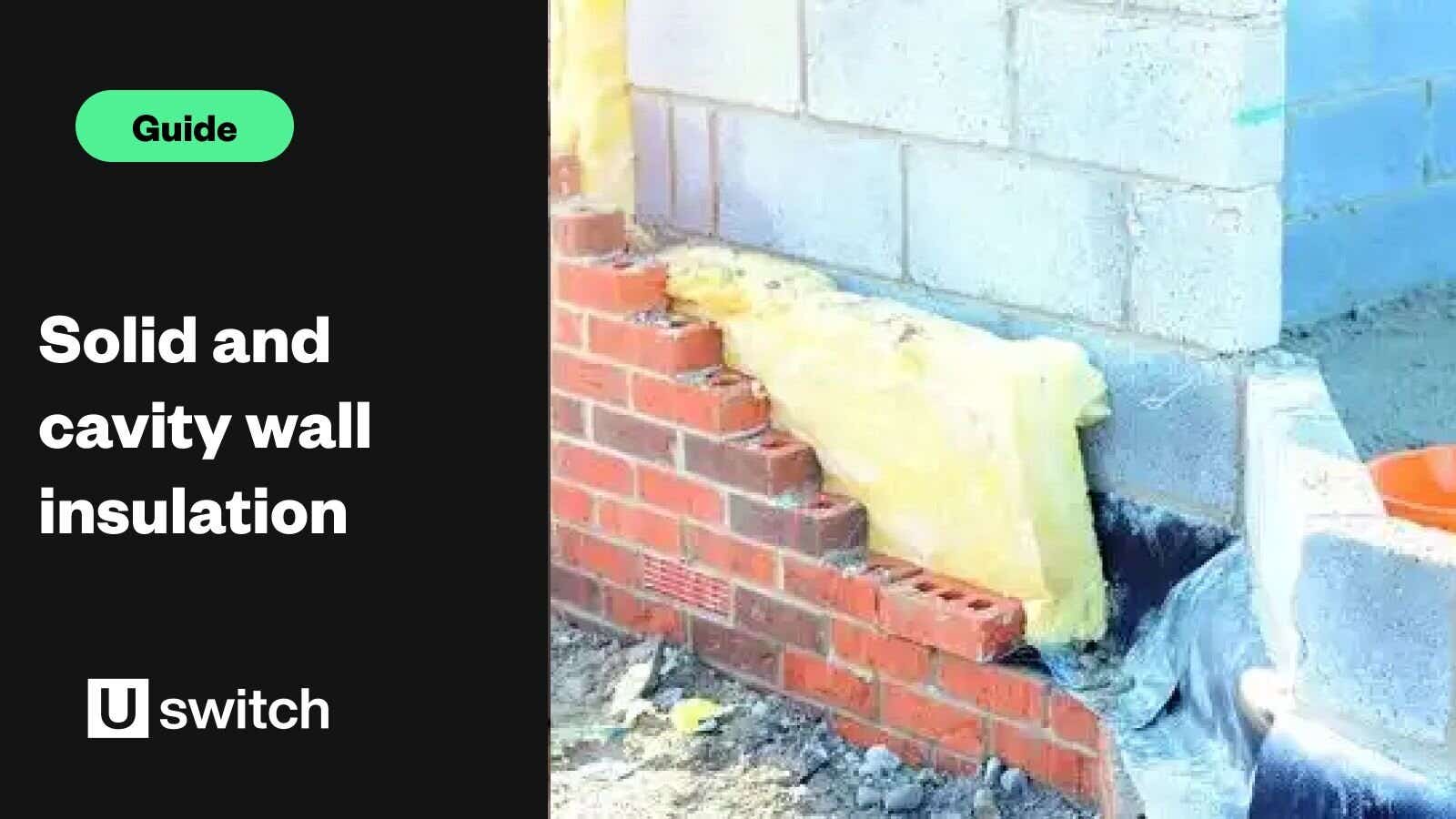Why consider wall insulation?
Around a third of heat in most homes is lost through the walls so, in order to save energy, it's important to make sure your wall insulation is up to scratch as much as possible. This will also help keep your home warmer than it would be otherwise.
What type of wall have I got?
Before researching wall insulation, you'll need to know what type of walls your home has.
Solid walls
Until the 1930s, most homes in the UK were built with solid walls. "Solid" means that there is no gap inside them.
Typical characteristics of solid walls
- The brick pattern is recognisable by having lots of end bricks, which look like half-length bricks, in the middle. These are in fact mainly cross bricks, which run from the front to the back of a wall
- The depth of a wall - ignoring any plaster on the interior surface - is a brick's length, about nine inches.
Cavity walls
Homes built after the 1930s are likely to have cavity walls. This means they’re made up of two walls with a gap in between.
Typical characteristics of cavity walls
- They usually consist of an inner layer of brick or concrete and an outer layer of brick
- Ties made of metal or plastic hold the two walls together
- The brick pattern is even, showing many more full-length bricks than solid walls
- The depth of the wall is greater, as most cavities measure at least two inches.
Other types of wall
There are some other types of construction, such as timber frame and "no fines" concrete, but these are comparatively rare. No fines homes were more often built by local authorities in the 1940s and 1950s for council housing, and can be treated as solid wall for insulation purposes, although (uninsulated) they perform better than older solid wall properties.
Heat loss in walls
Cavity walls lose less heat than solid walls and are much easier to insulate. Some parts of the country are fortunate in having relatively old homes with cavity walls.
The more external walls you have, the more heat loss you will experience. This means that a detached house will tend to lose more heat than a mid-terrace one. Likewise, a new-build apartment will be more energy efficient than an older semi-detached house. Also, some old homes with solid external walls may have extensions built with cavity walls.
Do I need cavity wall insulation?
Cavity wall insulation is one way to help cut energy costs. The Energy Saving Trust estimates you can make back the cost of the insulation in five years on average.
However, it’s not unusual for people to investigate getting cavity wall insulation when they already have it installed.
Homes built in the last couple of decades are likely to have had insulation put in the cavities when they were built. Otherwise, you may be able to tell if you've already got cavity wall insulation by looking through the papers handed over to you when you bought your home. Cavity wall insulation often has a 20-25 year guarantee. If you live in a low-level block of flats, insulation installed by the owner of a flat above or below will also have insulated your property, as the cavity needs to fill from the bottom upwards.
There are also physical checks for cavity wall insulation you can make:
- Look for drill holes, at about waist height, between bricks, at about one metre or one metre and a half intervals, all around the outside of your home. These will have been refilled with mortar (cement) but may show up as a slightly different colour
- Go into your loft and see if you can take a look at the tops of the walls. It's likely that some insulation will have spilled out of an open cavity.
How to insulate cavity walls
If you decide you want cavity wall insulation installed, you should hire a professional. They will need to inject the insulation material through the external wall of your home into the gap between the inner and outer layers of brickwork.
In 2024, Checkatrade estimated the average cost of cavity wall insulation to be £1,800 for a mid-terrace going up to £4,600 for a detached house.
You might qualify for free or cheaper cavity wall insulation through the government’s Great British Insulation Scheme.
How to insulate solid walls
Solid wall insulation involves making a solid wall thicker by adding thermal material to either the external or internal side. However, it’s a big undertaking and can cost thousands of pounds to install. But having it done could make your home much warmer and save you money on your energy bills.
Whichever type of walls you have, always find a registered and insured insulation expert and ask for a 25-year guarantee.
What are some other types of energy-efficient insulation?
Other types of insulation that can save energy and reduce costs are:

